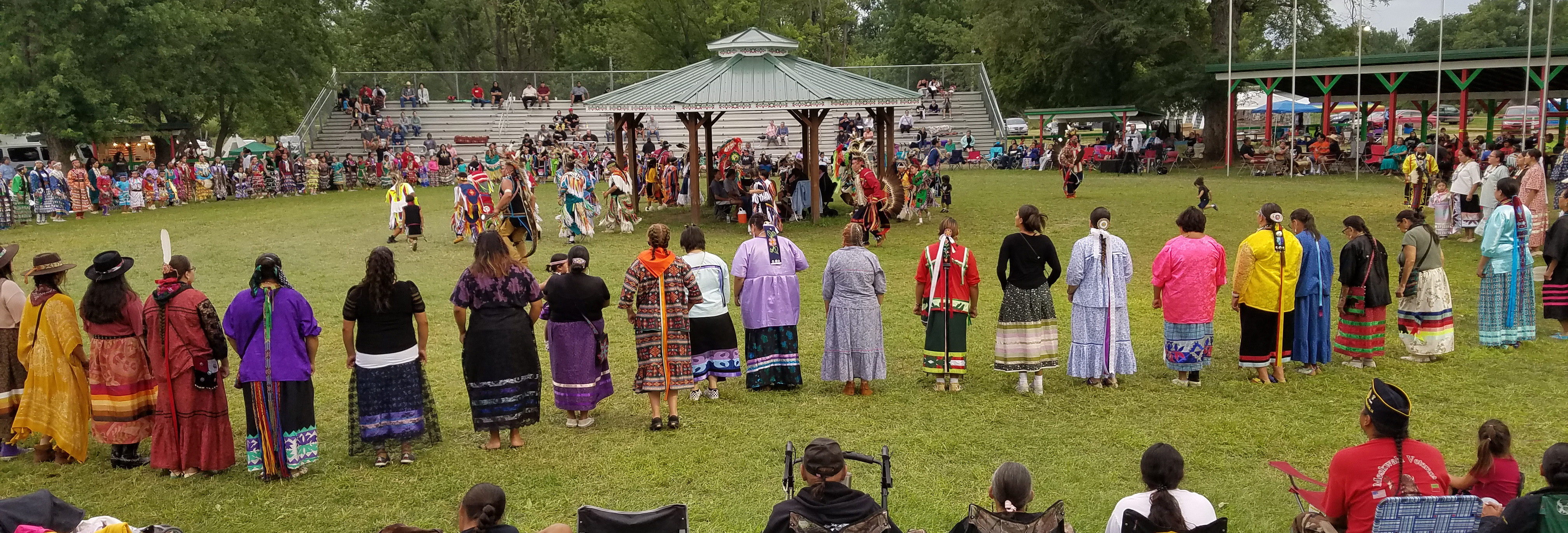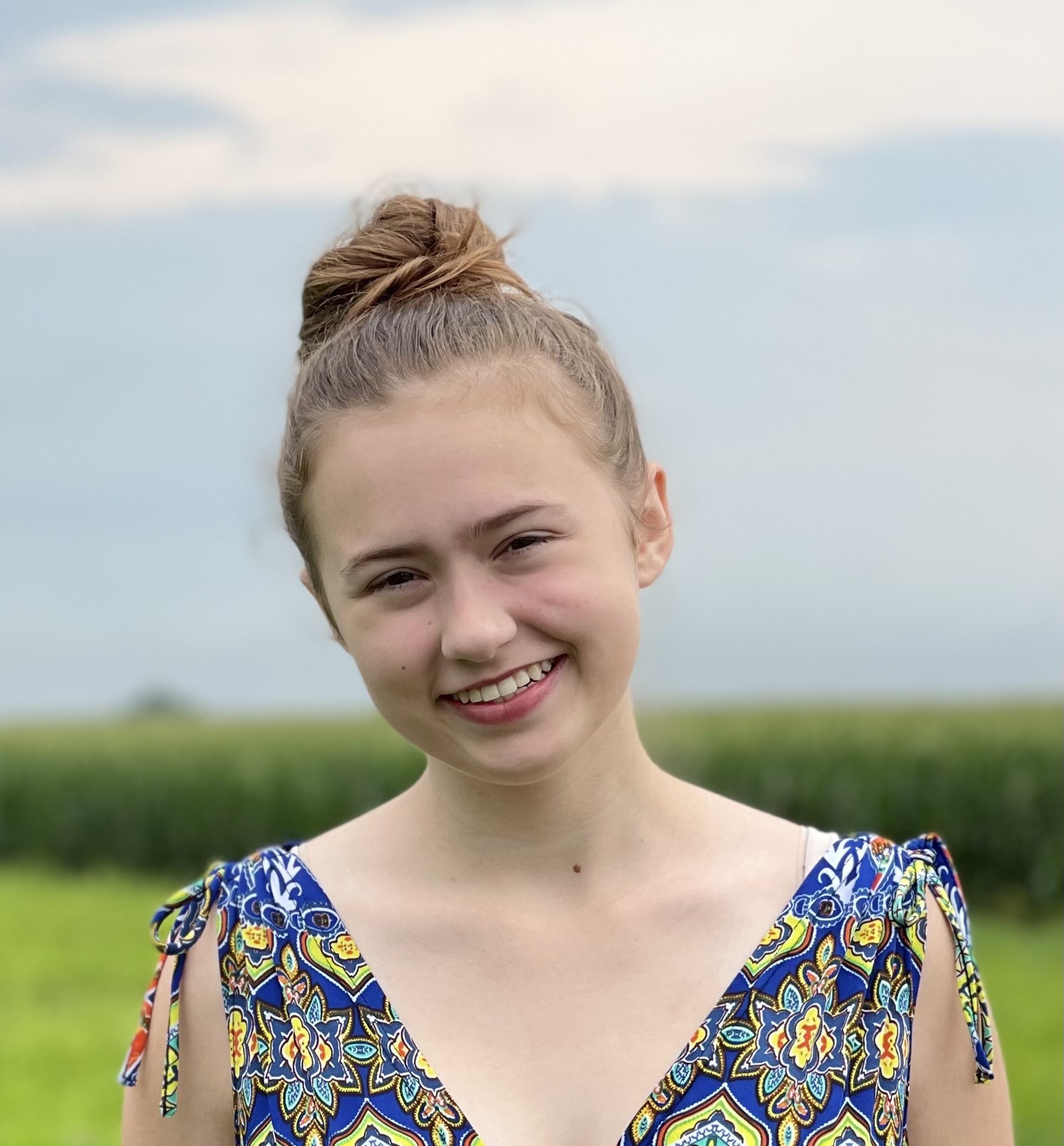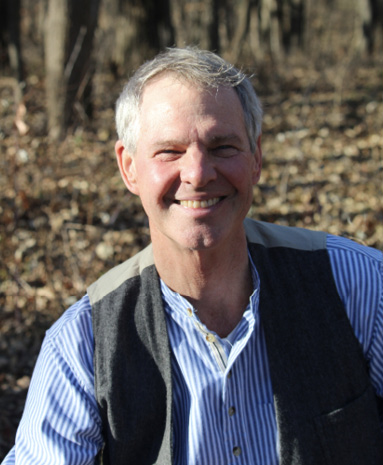Associate Editor Sophia Unzicker and Publisher Jon Andelson discuss place, handcrafting, and two of Iowa’s most distinctive communities.
Sophia: I’ve been thinking more about place lately, about the importance of knowing the place where you are. This is my second year as a student at Grinnell, and I feel like each semester I learn a little bit more about this place. And I know that there is still so much, much more to know!
Jon: As there is for me, and I’ve lived here for 50 years. How has your learning about this place happened?
Sophia: I think first it happened just by living here—by learning the weather and looking at the corn fields and the prairie, rather than the busy neighborhood streets of St. Louis. And then I began reaching out to others through shared experiences: going to informal spoon carving sessions, working in the college garden, and attending crafting events with other students. Those experiences were all at the college. Then came the next layer—getting to know the community. I began volunteering at the animal shelter, visiting local nature preserves, and going to town events like live music in the park or the farmer’s market. I started seeing familiar faces at the grocery store and randomly running into people I already knew.
Jon: Part of knowing a place is knowing about your neighbors in that place. From what you said, I sense that you have a larger view of this place than just the college. What value have you found in that?
Sophia: I’ve found connection and support. I’ve found a context that I can situate my life within. Knowing your neighbors allows you to really invest in the place where you live. Getting the chance to know my neighbors beyond the college has provided rich connections, full of guidance and learning.
I feel like I know how to contribute to and interact with my community. This has helped make moving to a new place more tangible and less overwhelming.
Jon: I noticed that several of the ways you have come to know Grinnell involve working with your hands.
Sophia: I gravitate towards handcrafting, especially when it comes to group activities. Something about learning from others and creating pieces of art feels so meditative and healing. I enjoy ceramics, gardening, spoon carving, and quilting. I’m writing a piece for this journal about quilting with members of the Grinnell Jewel Box Quilt Guild! You know, now that I think about it, handcrafting is how we met—we both attend spoon carving sessions on Friday afternoons. What are your thoughts about handcrafting?
Jon: When handcrafting you are in the moment, focused on the task at hand, but at the same time you can talk with others, listen to music, or just meditate. I also like the idea that you’re making something that can be used—I’d even say, should be used. With respect to those spoon carving sessions, I like the fact that students, faculty, college staff, and townspeople all participate. Also, many people plan to give away the spoons they make, and that feels special.
Meskwaki Beadwork.
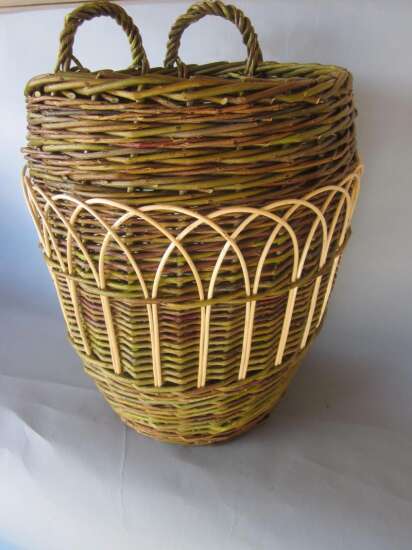
Amana Basket. Photo: Cedar Rapids Gazette.
Sophia: I attended a talk you gave on campus recently about two communities in Iowa that you’ve done research on: the Meskwaki Settlement and the Amana Colonies. And I remember that handcrafting is an important tradition in both communities.
Jon: A handcrafting tradition is one of the things these two very different communities have in common. Both women and men traditionally engaged in—and still do—a wide range of craft activities, some distinctive to one community or the other—weaving rugs from sheep wool in Amana, for example, and weaving mats from cattails among the Meskwaki. Other crafts were, and are, practiced in both communities, for example wood carving. The Meskwaki even carved spoons. It reminds me of an observation that the philosopher Richard Sennett made to the effect that the ancient Greeks considered craft and community to be connected. 1
Sophia: You said, “one of the things” when referring to these communities’ commonalities. What else do the Amana and Meskwaki communities have in common?
Jon: Both came to Iowa in the 1850s from elsewhere and bought land along the Iowa River on which to settle-–only about 30 miles apart. Gardening was important in both communities, and the foundation of both communities was religion.
Sophia: Can you say more about their religions?
Jon: It is not my place to talk about the Meskwaki religion. I’ll just say it is an ancient tradition that honors a Creator who taught the Meskwaki what they needed to know to survive on the Earth. The Creator visits the community every year in the winter months, which is a time of telling special stories. Some of these stories have been collected and published. The Meskwaki also have a rich ceremonial life. 2
The Amana Church was founded in 1714 in Germany. The founders were Radical Pietists who believed the state church of their day was irredeemably corrupt. To attain salvation, one had to separate from the church and, together with others, follow biblical teachings and the words of special individuals whom the community believed were divinely inspired. They called them “instruments,” as in “instruments of God.” The community was persecuted in Germany, and in the 1840s, through one of the instruments, God told them to immigrate to the United States. Their first settlement was in western New York. In 1854 God told them to move again, to Iowa.
Sophia: It sounds like both communities were really centered around a strong sense of religion. In my experience, and I would venture to say in many others’ as well, religion can provide a strong basis for a sense of community. I was raised in a small Mennonite church in St. Louis, which taught me about community and what it means to serve and participate in community. One of our traditions that I particularly love is that each first-born child in the church gets a quilt, made for them by members of the congregation. Each quilt is unique, with its own style and pattern. I received one of these quilts on my first birthday and now I have helped make these quilts for the next generation. In the form of quilts, prayer, potluck, and monetary support, the church I grew up in tried to provide each member with everything necessary to live and grow, and in turn, members shared their talents with the church by playing music, singing, praying, organizing, and just being present. In some ways, the structure of the church upends capitalistic norms through resource-sharing and community-based functioning.
Jon: The Meskwaki and Amana communities are similar to the Mennonites in that way. In Amana this was truer before 1932, when the community was organized as a communal society. In imitation of the Apostolic community described in Acts 4:32, the members had no private property. The community collectively owned the land (26,000 acres), the buildings, the businesses, and the products of the farms and factories, and it provided the members with food, clothing, shelter, an eighth grade education, and medical care. In exchange, the members worked for the common good at jobs assigned by the church elders.
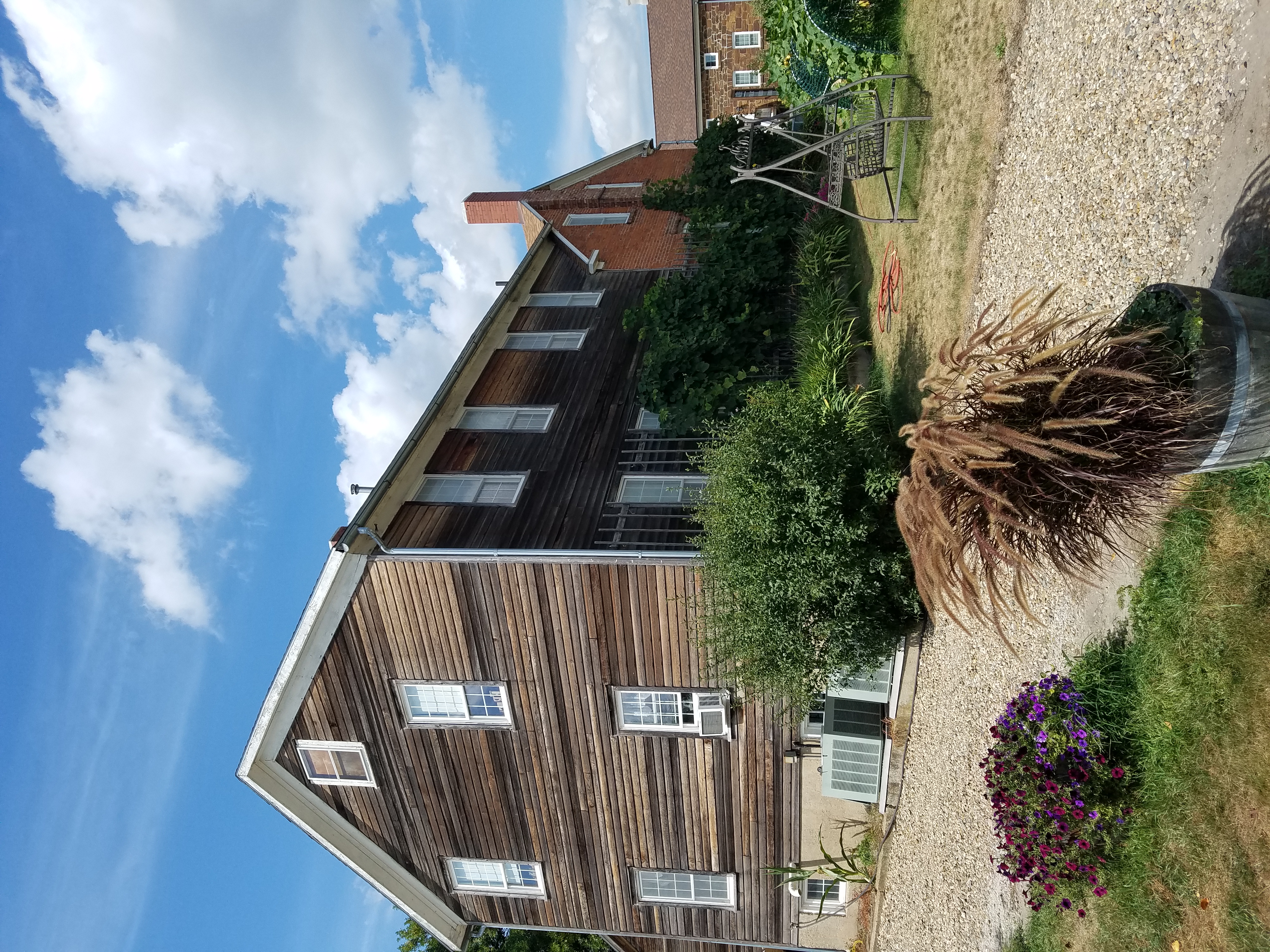
Communal Era Amana Buildings.
In 1932, for a host of reasons, the members decided to reorganize as a joint stock company, separate from the church. The members of the old communal society were issued stock in the new corporation. Everything shifted to a cash economy, although the corporation continued to own the land and the major businesses, and for many years covered the stockholder’ medical expenses. The new system also allowed private businesses to open. Since the 1960s, tourism has grown in importance, and today Amana is one of Iowa’s most visited tourist attractions.
The Meskwaki also bought their land collectively, using money they had received—ironically—as part of land cession treaties with the federal government. Over time the tribe has bought other parcels and today owns over 8,000 contiguous acres. The Meskwaki operate other businesses today, including a casino, that employs many tribal members as well as non-Meskwaki. They have their own school, health clinic, recreation center, community garden, nursing home, and more. The tribe is the biggest employer in Tama County.
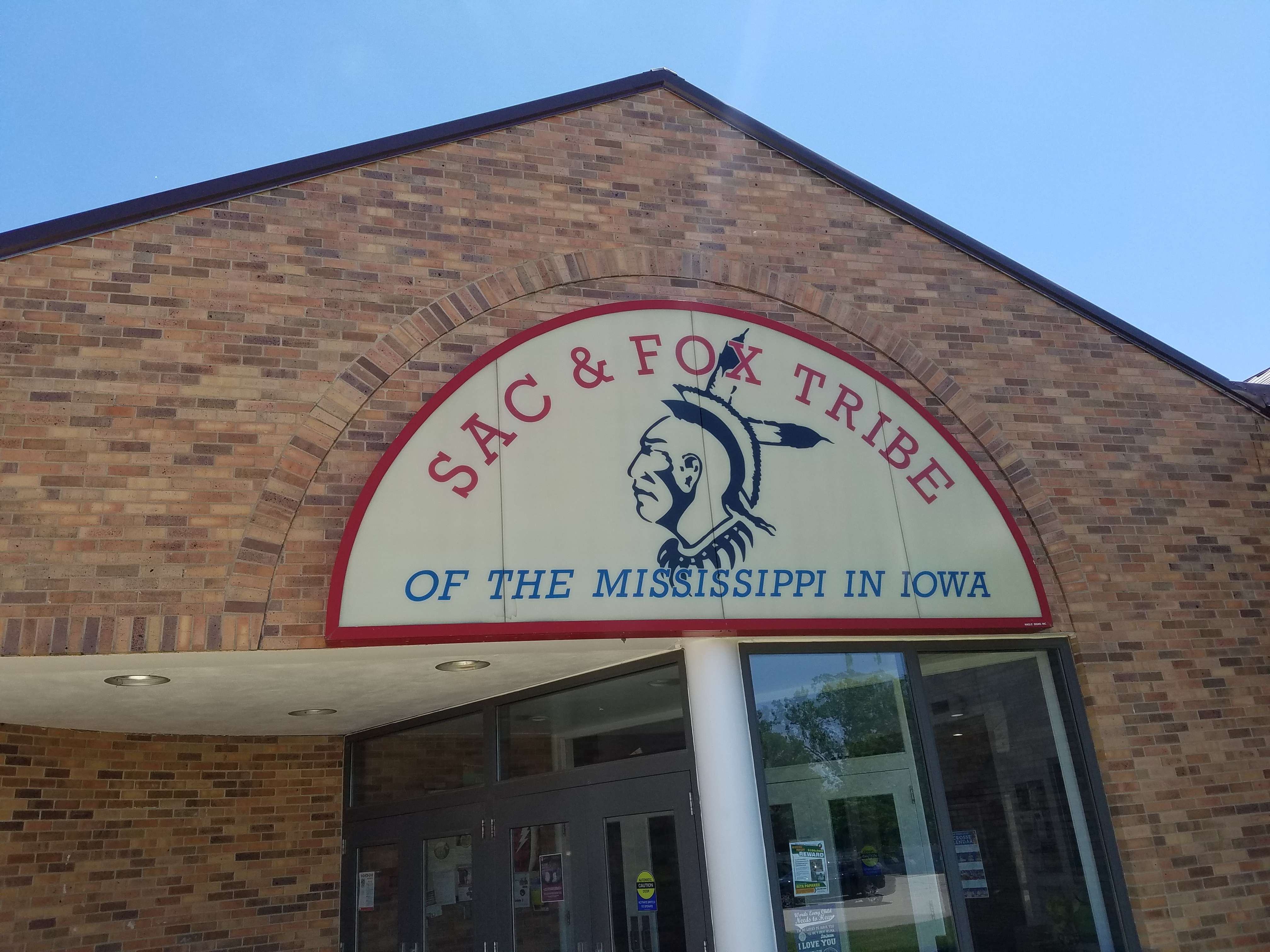
Meskwaki Tribal Center.
Sophia: That’s amazing. This brings me back to getting to know one’s neighbors as part of getting to know a place.
Jon: I think that the Meskwaki and the Amana Colonies are Grinnell’s most interesting neighbors. The Settlement is about 30 minutes away and Amana about 45.
Sophia: How much do you think Grinnellians know about each?
Jon: In my experience, people from central Iowa—and older folks almost without exception—have heard of and probably visited Amana. It has been a big tourist attraction in the state for a long time. But what they know about Amana is limited. They know it as a place to go for a big German-style meal, for wineries, for lots of little shops, to buy top-of-the-line woolens and furniture, and to see distinctive architecture. But most people today know little about the community’s history, about Amana’s foundation in religion, about its ninety years of communal living. I think outsiders did know some of those things better in the past, especially around 1932 when Amana reorganized into a joint-stock company. At the time, the newspapers were full of headlines like, “communism goes broke in Iowa.” Very few people, then or now, could tell you why Amana reorganized. They’d probably just say that communism doesn’t work. Well, for ninety years it did, thanks to the religion. There’s a wonderful museum in Amana that tells the whole story, but a minority of the tourists visit it.
Sophia: Very interesting. And what about the Meskwaki?
Jon: People’s knowledge of the Meskwaki is also limited. They probably know the Meskwaki are an Indian tribe. If they know anything more, it is the annual powwow and the casino. A lot of people incorrectly think the Settlement is a reservation. They may think the Meskwaki have always lived in Iowa, which they have not. Few people know the story of how the Meskwaki came to Iowa; it involved intermittent warfare against other tribes and the French for over 100 years. I would bet that few people know that the Meskwaki signed a treaty with the government in 1842 ceding their land in Iowa and promising to move to a reservation in Kansas. So how come they’re still here? Many Meskwaki didn’t want to leave Iowa. Not many non-Meskwaki—and this includes Grinnellians—know that J.B. Grinnell, the founder of the town, played a crucial role, as a State Senator in the 1850s, in making it possible for the Meskwaki to return to Iowa and buy land in Tama County. The Meskwaki Historical Museum features this story prominently, and even has two photographs of J.B. Grinnell on display. The story is not taught in Grinnell public schools. Why has this history been erased?
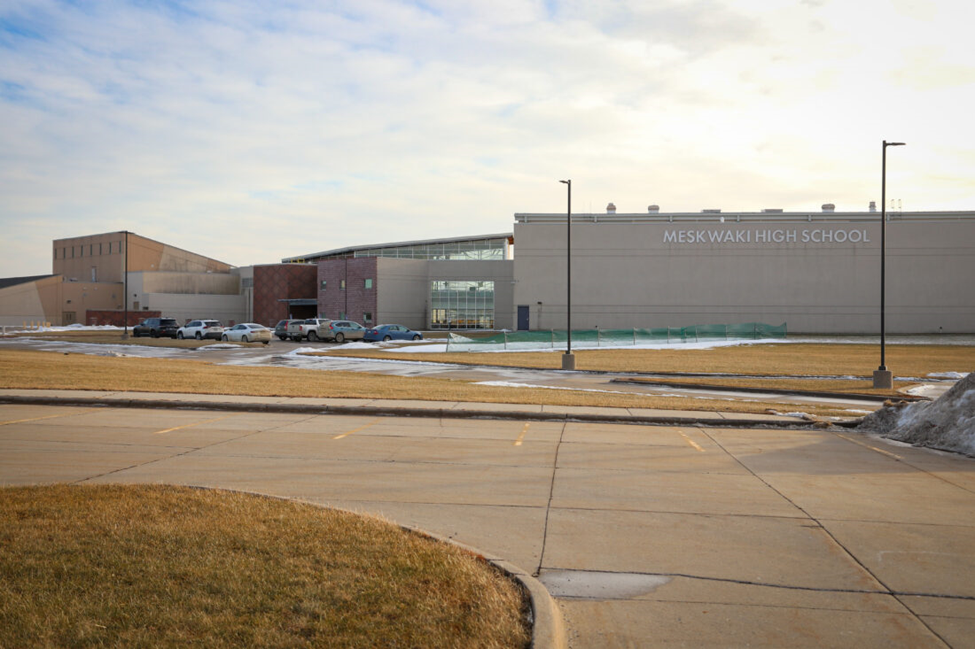
Meskwaki Settlement School.
So, I think there’s a pretty big difference between what people know about the Meskwaki and Amana and what they should know, in my opinion. I’m curious what the college students know about Amana and the Meskwaki.
Sophia: From conversations I’ve had, it seems like students either know nothing about either, or they know quite a lot about one or the other. When I asked fellow students if they knew of the Meskwaki and Amana, they often could tell me that the Meskwaki are an indigenous group in Iowa. Beyond this, most students did not know anything about the cultures, habits, or locations of either the Amanas or the Meskwaki. However, a few students, the ones who knew more, knew quite a lot about the group they were familiar with. But even these students usually did not know a lot about both groups.
This makes me wonder how well Amana people and the Meskwaki know each other.
Jon: They knew each other better in the past, when Amana was a communal society. Meskwaki people used to visit the Amanas to engage in barter; cash was very scarce for both groups. Amana woolen blankets were popular among the Meskwaki. I have not seen any written records of what they’d bring in trade, maybe animal pelts, handcrafts, or foraged food. Amana’s leaders allowed the Meskwaki to hunt and gather on Amana property, and sometimes Amana and Meskwaki men would go hunting together. Meskwaki women often visited the communal kitchens in Amana hoping to get some food. People from Amana did not visit the Settlement much. My sense is that the interactions fell off after 1932. The communal kitchens closed that year, and Amana’s new cash economy increased the separation.
Ironically, the land the Amana people purchased in 1855, where they established the village of South Amana, one of the seven villages of the Amana Colonies, had been the site of a Meskwaki village led by Chief Poweshiek, after whom the county where Grinnell is located is named. So, Grinnell, Amana, and Meskwaki histories are braided together in that way.
Sophia: I like your use of the word braided–-it feels very fitting. For so long these histories have been braided together because of the land that they share, the place that they inhabit, and the interactions they had. Each group has come to know the land in a unique way and know their neighbors in different ways, making this place interconnected and vibrant.
I hope that when college students come to Grinnell knowing little about this place, like I did, they get the opportunity to learn about the history of Grinnell and the history of our neighbors here, so they can see the beautiful and complicated history of the place where we live.
1 Richard Sennett, The Craftsman. New Haven: Yale University Press (2008), p. 9.
2 William Jones, Fox Texts, Volume I. Publications of the American Ethnological Society. Leyden: E.J. Brill (1907). Facsimile reprint by Legare Street Press, an imprint of Creative Media Partners (no date).
